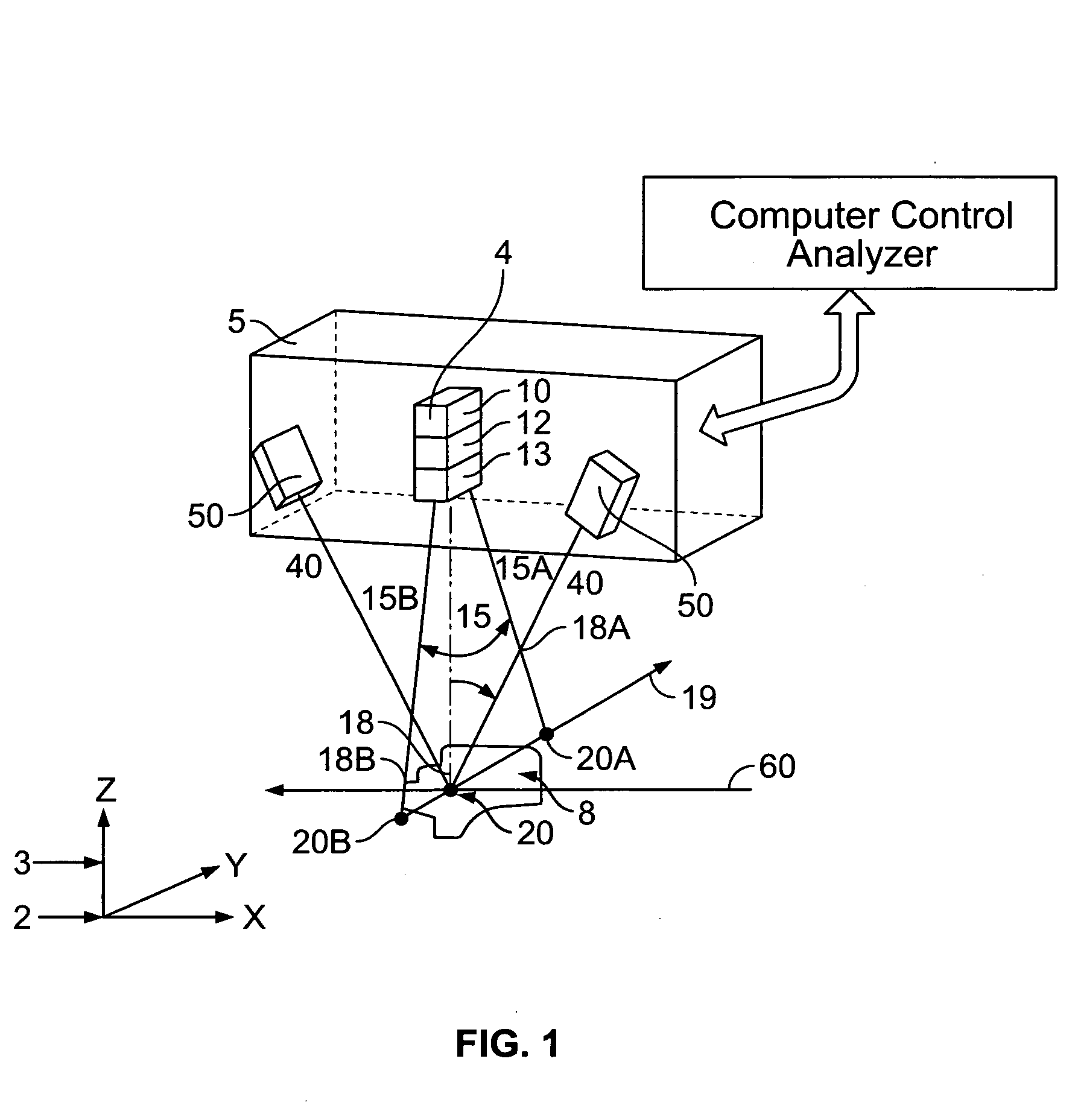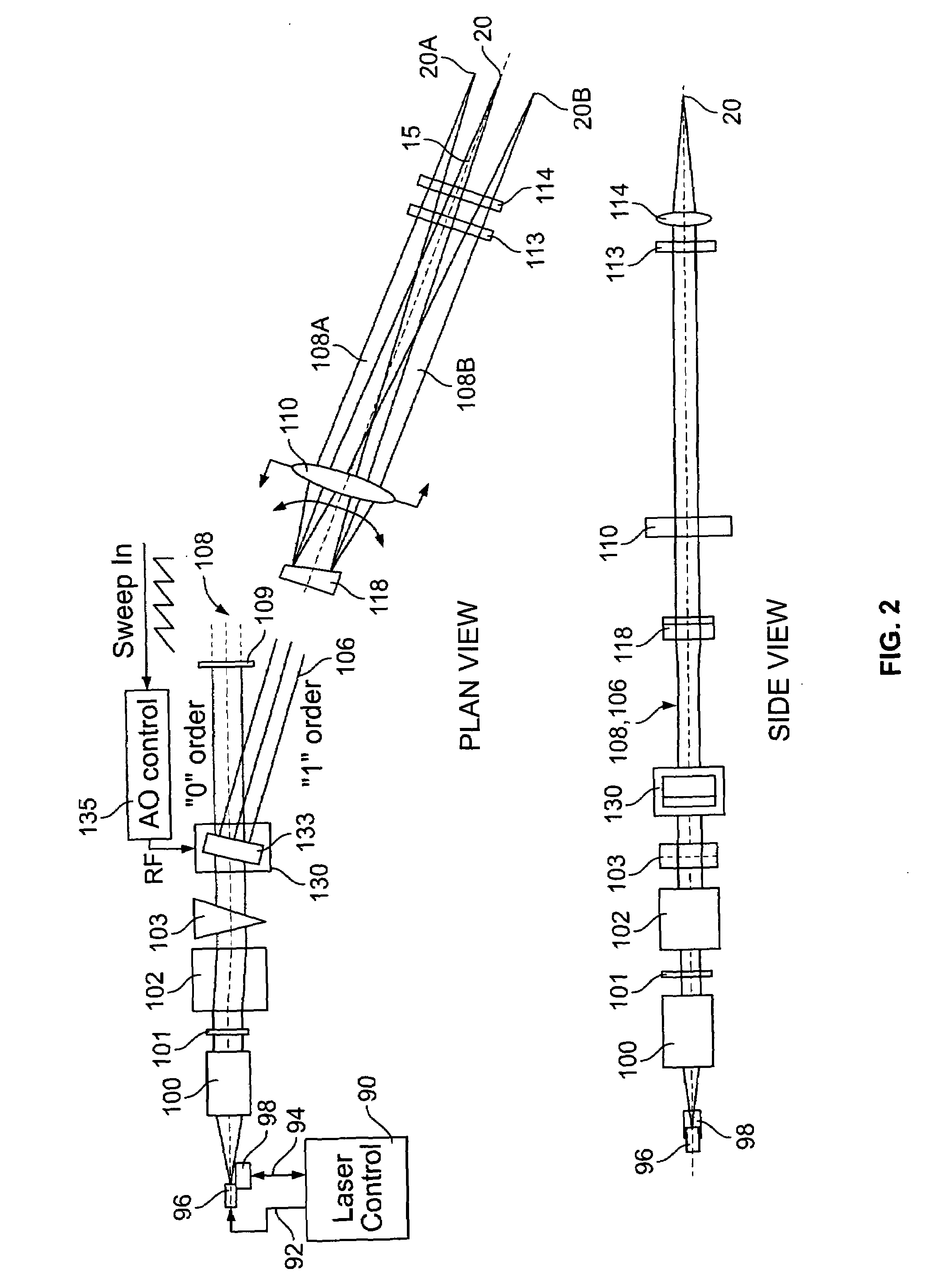Method and system for providing a high definition triangulation system
a triangulation system and high-definition technology, applied in the direction of optical radiation measurement, instruments, measurement devices, etc., can solve the problems of damage to the detection unit, decrease of the depth of field, and range of optical signals of the light detection uni
- Summary
- Abstract
- Description
- Claims
- Application Information
AI Technical Summary
Benefits of technology
Problems solved by technology
Method used
Image
Examples
Embodiment Construction
[0091]FIG. 1 is a schematic view of a 3-D data gathering portion of a scanning laser beam triangulation system, according to an example embodiment of the present invention, used, for example, to measure and inspect wafers and semiconductor devices. Although such systems often are capable of gathering 2-D data as is outlined in U.S. Pat. No. 6,291,816, issued to Liu, entitled “System and Method for Measuring Object Features with Coordinated Two and Three Dimensional imaging,” the disclosure of which is incorporated herein in its entirety by reference thereto, and in U.S. Pat. No. 5,859,924, issued to Liu et al., entitled “Method and System for Measuring Object Features,” the disclosure of which is incorporated herein in its entirety by reference thereto, the 2-D portion of the system is not described herein for the sake of clarity.
[0092]A scanning head 5 may be arranged to gather surface data from an object 8 at a nominal height 2 along the Z axis. The scanning head 5 may contain one...
PUM
| Property | Measurement | Unit |
|---|---|---|
| wavelength | aaaaa | aaaaa |
| wavelength | aaaaa | aaaaa |
| wavelength | aaaaa | aaaaa |
Abstract
Description
Claims
Application Information
 Login to View More
Login to View More - R&D
- Intellectual Property
- Life Sciences
- Materials
- Tech Scout
- Unparalleled Data Quality
- Higher Quality Content
- 60% Fewer Hallucinations
Browse by: Latest US Patents, China's latest patents, Technical Efficacy Thesaurus, Application Domain, Technology Topic, Popular Technical Reports.
© 2025 PatSnap. All rights reserved.Legal|Privacy policy|Modern Slavery Act Transparency Statement|Sitemap|About US| Contact US: help@patsnap.com



